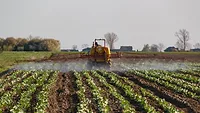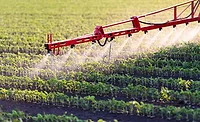Consumer Reports Analyzes Seven Years of USDA Pesticide Residue Monitoring Data, Highlights Risky Foods

Image credit: Sonja Langford via Unsplash
Based on an analysis of seven years of data from the U.S. Department of Agriculture’s Pesticide Data Program (USDA’s PDP), comprising pesticide residue test results for 29,643 individual food samples, watchdog group Consumer Reports (CR) is warning that it found pesticide residues to pose “significant risks” in 20 percent of produce analyzed. At the same time, CR found that pesticide residues were not a concern for nearly two-thirds of the foods included in its study, including nearly all of the organic samples.
USDA’s PDP continuously monitors pesticide residues in U.S. foods. CR’s report shortly follows USDA’s PDP Annual Summary published in January 2024, which asserts that, in 2022 (the most recent reporting period), over 99 percent of samples tested had pesticide residues that fell below the Environmental Protection Agency's (EPA's) established benchmark levels, and that 27.6 percent of samples had no detectable residue.
Although USDA’s PDP Annual Summary emphasizes that more than 99 percent of produce falls below EPA benchmark levels, CR scientists believe EPA tolerances are set too high, and therefore CR used lower pesticide residue limits than EPA tolerances when determining which foods pose a risk to human health in its analysis. More specifically, per CR’s analytical method, a fruit or vegetable could be determined as “low-risk” even if it contained several pesticides, if the combination of the number, concentration, and toxicity of the chemicals is low. For example, although broccoli was found to contain several pesticide residues, CR considers the commodity low-risk because chemicals of greater health concern were present in only a few samples and at low levels. On the other hand, CR raised alarm bells about watermelon because of a single pesticide—oxamyl—which is associated with harms to human health and was found in 11 of 331 conventionally grown, domestic watermelon samples.
According to CR’s present analysis, pesticide residues were most present in bell peppers, blueberries, green beans, potatoes, and strawberries. In general, 16 of the 25 fruits and 21 of the 34 vegetables in CR’s analysis had low levels of pesticide risk, meaning that even children and pregnant people can safely eat more than three servings a day of those foods. Additionally, ten foods were of moderate risk, meaning that up to three servings a day are safe to eat. In contrast, 12 foods presented more serious health concerns.
As noted in USDA’s recent PDP Annual Summary, CR underlines that some foods can contain residues of pesticides that have been banned in the U.S. for a decade or more, such as DDT and its metabolites, among other chemicals. For example, CR found methamidophos (banned from foods since 2009), a metabolite of the pesticide acephate (banned for use on green beans since 2011), in 4 percent of conventional, domestic green bean samples—at levels surpassing those that CR scientists consider safe by more than 100 times.
CR also found that imported produce, especially from Mexico, carries higher levels of pesticide residues than domestic produce. More specifically, seven imported foods were found to pose a “very high risk,” compared to only four domestic foods, and of the 100 individual fruit or vegetable samples with the highest risk levels, 65 were imported. Furthermore, 52 of those 65 very high-risk imports came from Mexico, the majority of which were strawberries and green beans.
A chart published alongside CR’s report visualizes the level of risk (per CR standards) posed by pesticide residues in 25 fruits and 34 vegetables, both conventionally grown and organic, and both U.S. grown and imported. Risk levels correspond to the number of servings a 35-pound child could safely consume each day, and are based on a pesticide’s chronic toxicity. Overall, when deciding on conventional fruits and vegetables to consume, CR recommends choosing those rated on its chart as “very low,” “low,” or “moderate-risk.” When possible, CR suggests replacing a food rated “high-risk” or “very high-risk” with a lower-risk commodity, or to choose organic. CR emphasizes that risk comes from consuming repeated servings over time.
Looking for quick answers on food safety topics?
Try Ask FSM, our new smart AI search tool.
Ask FSM →









